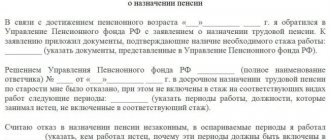Insurance premiums: types (mandatory insurance premiums, etc.)
Insurance premiums may vary. The following types can be classified as mandatory contributions:
- Pension. Contributions to the Pension Fund are one of the most extensive categories, so let’s look at them in more detail.
- Medical. You can find another name - compulsory medical insurance.
- Social. Insurance premiums of this nature are made to make a person feel more confident in the event of temporary disability or forced leave due to pregnancy and childbirth.
- Injury. The amount is paid in case of injury or occupational disease.
Social contributions are not paid from the employer's pocket, but are part of the employee's earnings. That is, they are calculated from the employee’s income (not necessarily salary - other payments can also be used). For example, often the employer will calculate the required amount from bonuses, vacation pay, compensation, financial assistance (only if its amount is more than 4 thousand rubles per year).
When and how to pay fees
Monthly mandatory payments for pension, medical contributions, “injury”, insurance contributions in case of temporary disability and maternity are transferred no later than the 15th day following the payment. We pay for August in September, for September in October, etc. Each contribution is paid on a separate payment order.
Deadlines for transfers “for yourself”:
- RUB 29,354 - no later than December 31 of the current year;
- contributions from an amount exceeding 300,000 rubles no later than July 1 of the following year.
- medical contributions - no later than December 31;
- voluntary contributions - no later than December 31 of the current year.
Insurance premiums: how reporting is prepared
The employer pays insurance premiums and must also prepare reports. Provided that he and the individual have concluded a GPC agreement or a regular employment contract. After contributions are made, reports are prepared and submitted to government agencies. It's a different matter when it comes to individual entrepreneurs. If he has no other employees and is not listed as an employer on the documents, he does not have to submit reports.
Insurance premiums and reports on them must be submitted within a certain period. Standard deadlines are provided for them:
- Quarter;
- Half year;
- 9 months;
- Year.
When any of the periods under review ends, it is necessary to submit a report in which you must indicate the base, the amount of contributions, and from which payments the contributions in question were made. You need to report using Form 4-FSS and a single calculation.
Insurance premiums in 2021: how to calculate contributions to the Pension Fund, what base is used to ensure that insurance premiums are paid, current tariffs
Not everyone pays insurance premiums, but only companies and individual entrepreneurs who hire employees. The size of the contribution under consideration for 2021 is 22% of monthly earnings. That is, from salaries, bonuses, vacation pay, overtime, which go towards contributions to the Pension Fund. But this does not apply to state benefits, certain compensations, financial assistance (not always, but only if they are less than 4 thousand rubles per year).
As for the tariff at which insurance premiums are paid, for a standard situation it is 22% of earnings. But the tariffs for foreign citizens are different, so you need to carefully read the legislation if this is your situation.
The rate may also be affected by the amount of payments. If we take 2021, then the rule was in force according to which if the base reaches 1,150,000 rubles, the interest rate is reduced and is 10% instead of 22%. And in 2021, the minimum threshold increased and was already 1,292,000 rubles.
Please note that rates may vary depending on the type of activity the company is involved in.
Some firms may be able to pay a reduced rate. For example, such favorable conditions are available for companies operating in the IT industry. They can make contributions to the Pension Fund at a rate of 8%. But the conditions are not the same for everyone, therefore it is advisable to clarify the information in question in the legislation in order to know what amount must be paid.
Payment of insurance premiums: who to pay for
Paying insurance premiums is not advisable in all cases. The employer undertakes to make contributions to the Pension Fund only in certain situations:
- Provided that the person works in the organization according to an employment contract;
- A copyright contract has been signed with the employee;
- There is an agreement on the alienation of the exclusive right to some developments in the scientific field (the same applies to art and literature);
- Publishing agreement.
The amount of the contribution depends on the direction in which the person works. For some professions, paying tax is not required at all. For example, lawyers, notaries, and entrepreneurs may not worry about it.
Insurance contributions: when to pay pension insurance contributions
Insurance premiums must be paid on time. The entire amount must be transferred by the 15th of each month (payments considered are monthly). But at the same time, every month you pay a fee for the previous one.
Insurance premium rates
The rates indicated in the table apply to most payers.
| Taxable base | Pension Fund | FSS | FFOMS | Bottom line |
| Does not exceed the limit value | 22% | 2,9% | 5,1% | 30% |
| Exceeds limit value | 10% | 0% | 5,1% | 15,1% |
Starting from 2021, benefits for the simplified tax system for paying insurance premiums have been cancelled. There is only one exception left - the simplified tax system, which is engaged in non-profit socially oriented activities: scientific developments, sports, etc. They pay contributions at a rate of 20%.
There is a category of workers for whom pension contribution rates have been increased by 9%. These are workers engaged in hazardous work. An assessment of working conditions will help you get rid of the increased tariff.
Tariffs for injuries depend on the occupational risk class assigned to an organization or enterprise. It depends on how risky the field of activity is and how often occupational diseases occur in it.
Reduced insurance premium rates in 2021
| Type of contribution | Insurance premium rates, % | |
| If the employee’s income is within the contribution base limit | If the employee’s income exceeds the contribution base limit | |
| on OPS | 10 | 10 |
| on compulsory medical insurance | 5 | |
| at VnIM | 0 | |
Insurance premiums: payment of insurance premiums and who is obliged to pay it
Insurance premiums must be paid by the policyholder for the insured person, and the amounts in question should not be deducted from the employees' salaries. The following persons must pay the funds in question:
- Companies-organizations;
- IP;
- Individuals who are not related to individual entrepreneurship.
There are several nuances regarding the payment of funds to individual entrepreneurs. The amount of contributions must be made by entrepreneurs for each employee who works with them. At the same time, individual entrepreneurs pay insurance premiums to the Pension Fund not only for their employees, but also for themselves.
Payment of insurance premiums: who can refuse to pay?
Some people may not pay mandatory insurance contributions to the Pension Fund at all. Individual entrepreneurs (if they work without hired help), notaries and lawyers are exempt from the contributions in question. Also, the contributions in question remain irrelevant for the following categories of citizens:
- People who do not work, but after conscription are in military service.
- They are on parental leave to care for a child who is under one and a half years old (and any parent has the right to this - it doesn’t matter whether we are talking about the mother or the father).
- If a person is engaged in caring for a person with a first group disability or an elderly person (80 years and older).
- When a person lives with a military spouse, a contractor serving in a place where it is impossible to find work, or with a diplomat.
In order for insurance premiums to be canceled and their amount not to be withdrawn monthly, you will have to write an application and submit it to the tax office. The application contains a request to be exempt from payment. Documents must be attached that confirm the grounds for such a request. It is important that having received such permission, it is prohibited to start a business activity.
Payment of insurance premiums: how to check whether payment has been made
When considering insurance premiums, it is important to ensure that the entire amount goes to the right place. Contributions to the Pension Fund are verified by sending various checks. They can be either desk-based or on-site. Almost all contributions are audited by tax authorities. They do not work only with cases of injury, since the area in question is controlled by the Social Insurance Fund. The FSS also performs the following tasks:
- They can go on field audits together with tax inspectors.
- Consider complaints in accordance with inspection reports.
- Conduct desk checks on applications from employers in order to reimburse funds for social insurance.
Checking whether the amount was calculated correctly and whether insurance premiums were submitted correctly is carried out thanks to an integrated approach. The work uses not only methods of desk verification of calculations, but also reconciliation of how many insurance premiums are accrued and actually paid. In addition, the inspection can be carried out not only on site, but also with a visit to the company.
Insurance premiums: what documents are needed for verification
In order for insurance premiums to be credited and used in the database, they must be sent. But it is also important to successfully pass the audit, which is acceptable to the tax authorities. To prove that contributions to the Pension Fund were submitted correctly, you need to collect some papers:
- Labor and civil contracts;
- Documents confirming employment (for example, orders);
- Time sheets and personal cards of employees;
- Work records, certificates of incapacity for work;
- Orders for obtaining maternity leave, calculations of the amount of benefits and confirmation of their payment;
- Statements that provide information on payments, settlements and wages;
- If payments were made to provide material support, orders for its accrual and on what grounds this was done.
So pension insurance contributions must be easy to track. If this is not the case, the tax office may request additional documents. If everything went well, after the check is completed, a certificate will be signed stating that the task was completed.
You can get legal assistance on insurance premium issues on our website.
Letter from the Ministry of Health of the Russian Federation for Taxes and Fees dated January 15, 2002 FS-6-10/ [email protected]
“On changes in 2002 to the procedure for paying contributions to state pension insurance (security)”
Ministry of the Russian Federation for Taxes and Duties for the purpose of implementing the Federal Law of December 31, 2001 N 198-FZ “On introducing additions and changes to the Tax Code of the Russian Federation and some legislative acts of the Russian Federation on taxes and fees” in the light of the Federal Law of December 15. 2001 N 167-FZ “On Compulsory Pension Insurance” states the following:
The provisions of the Federal Law “On Compulsory Pension Insurance” establish that contributions to state pension insurance (security) are divided into two parts: - a single social tax that goes to the federal budget and is used to finance the basic part of the labor pension; — insurance contributions received by the budget of the Pension Fund of the Russian Federation and directed to finance the insurance and funded part of the labor pension.
In accordance with the provisions of Article 7 of the Federal Law of December 30, 2001 N 194-FZ “On the Federal Budget for 2002”, funds received from taxpayers to pay off the debt formed on January 1, 2002 for the unified social tax ,?/traffic and penalties for late payment of the specified tax, in part, previously credited?/to the budget of the Pension Fund, are taken into account in federal budget revenues.
Payment of the unified social tax received by the federal budget, arrears on the specified tax, including penalties and ?/traffic in the share of the Pension Fund of the Russian Federation based on the results for 2001, contributions to the Pension Fund of the Russian Federation for the insurance and funded components of the labor pension are made by taxpayers in separate payment instructions for the corresponding codes of the budget classification of budget revenues of the Russian Federation, approved by order of the Ministry of Finance of Russia dated December 28, 2001 118n:
| Code | Name of income items |
| 1010510 | Unified social tax (contribution), credited to the federal budget |
| 1010511 | Debt, fees, penalties for the single social tax (contribution) as of January 1, 2002, previously credited to the budget of the Russian Pension Fund |
| 1010610 | Insurance contributions for compulsory pension insurance aimed at paying the insurance part of the labor pension |
| 1010620 | Insurance contributions for compulsory pension insurance aimed at paying the funded part of the labor pension |
Accounting for funds received in 2002 for the payment of the unified social tax (contribution), credited to the federal budget, and for the repayment of debt formed as of January 1, 2002 for the unified social tax, ?/traffic and penalties for late payment of the specified tax in the part previously credited to the budget of the Pension Fund of the Russian Federation, as well as insurance contributions credited to the budget of the Pension Fund of the Russian Federation and directed to finance the insurance and funded part of the labor pension, are carried out by the federal treasury bodies of the Ministry of Finance Russia on balance sheet account 40101 “Revenue distributed by federal treasury bodies between the levels of the budget system of the Russian Federation.”
To account for funds received to pay off social tax debt (including penalties and fines) in the share of the Pension Fund of the Russian Federation based on the results for 2001, tax authorities open additional personal account cards for taxpayers with a budget classification of income code budgets 1010511, where the balance of settlements with the Pension Fund of the Russian Federation for 2001, previously taken into account according to the budget classification code of budget incomes 1010510, is transferred.
Since 2002, the budget classification code for budget revenues 1010510 has been used to account for current payments for the unified social tax (contribution) credited to the federal budget based on 2002 accruals.
To account for received/their insurance contributions for compulsory pension insurance, aimed at paying the insurance part of the labor pension and paying the funded part of the labor pension, tax authorities open new personal account cards for taxpayers with “zero” balances with budget classification codes for budget income 1010610 and 1010620, respectively.
In order to implement the provisions of the Federal Law of December 31, 2001 No. 198-FZ “On introducing additions and changes to the Tax Code of the Russian Federation and some legislative acts of the Russian Federation on taxes and fees” in the light of the Federal Law of December 15, 2001 N 167-FZ “On mandatory pension insurance” tax authorities should take appropriate organizational measures to notify taxpayers of changes in 2002 in the procedure for paying contributions to state pension insurance (security).
Changes in tax reporting in connection with the pension reform will be announced additionally.
State Advisor of the Tax Service, 1st Rank F.K. Sadigov









